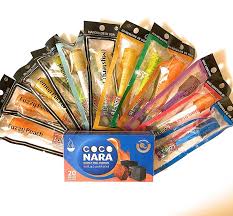The digital era has revolutionized the way creators share conten lollitip, build audiences, and monetize their work. Platforms that allow creators to post videos, images, tutorials, or art have opened up opportunities for individuals to reach global audiences without traditional intermediaries. These platforms are not only reshaping media consumption but also influencing trends, branding strategies, and online entrepreneurship. Understanding how digital content platforms function, their impact on creators, and best practices for safety and monetization is crucial for anyone seeking to engage professionally in the online world. This article provides an in-depth look at the evolution of content platforms, their features, challenges, benefits, and the strategies creators use to thrive in a digital landscape.
1. The Rise of Digital Content Platforms
Digital content platforms emerged as alternatives to traditional media, offering creators the ability to publish work directly to audiences. Platforms such as YouTube, Instagram, TikTok, and Patreon allow creators to bypass traditional gatekeepers, enabling unprecedented creative freedom. These platforms provide tools for engagement, analytics, monetization, and content management, empowering individuals to build personal brands and entrepreneurial ventures. The rise of such platforms has also democratized media production, allowing diverse voices to share perspectives, art, and expertise worldwide.
2. Core Features of Content Platforms
2.1 Content Upload and Distribution
Most platforms offer simple tools for uploading videos, images, and audio content, enabling creators to distribute work instantly to global audiences. This instant accessibility has accelerated the pace at which trends, ideas, and creative works spread online.
2.2 Audience Analytics
Data-driven insights allow creators to monitor engagement, audience demographics, and content performance. Analytics help guide content strategy, improve engagement, and optimize monetization opportunities.
2.3 Monetization Options
Many platforms provide direct and indirect ways to earn revenue, such as subscriptions, advertisements, sponsorships, or pay-per-view content. These tools have transformed content creation into a viable career path for many creators.
2.4 Community and Engagement Tools
Features like comments, likes, polls, and messaging allow creators to interact with their audiences. Strong engagement fosters loyalty, builds community, and encourages repeat visits to content channels.
3. Benefits for Creators
3.1 Global Reach
Content platforms enable creators to connect with international audiences, breaking geographical barriers and expanding potential influence.
3.2 Creative Freedom
Creators can experiment with formats, styles, and topics without restrictive editorial oversight, fostering innovation and diversity.
3.3 Entrepreneurial Opportunities
Monetization tools, brand partnerships, and merchandise options provide creators with multiple income streams, supporting professional independence.
3.4 Skill Development
Managing a digital platform requires skills in content creation, marketing, analytics, and audience engagement, contributing to professional growth.
4. Challenges Faced by Digital Creators
Despite benefits, creators face challenges such as algorithm dependence, content saturation, copyright issues, and online harassment. Navigating these challenges requires strategic planning, adaptability, and awareness of platform policies. Mental health concerns, burnout, and privacy risks are also significant considerations that creators must manage proactively.
5. Best Practices for Safe and Responsible Content Creation
-
Protect personal and sensitive information online
-
Understand and follow platform rules and copyright laws
-
Build engagement ethically without exploiting followers
-
Diversify content and income streams to reduce platform dependency
-
Maintain mental and physical health through balanced schedules
FAQs
Q1: How do creators earn money on content platforms?
Through advertisements, subscriptions, sponsorships, and premium content offerings.
Q2: Are analytics important for creators?
Yes, analytics guide content strategy, audience targeting, and revenue optimization.
Q3: How can creators protect their privacy?
Avoid sharing personal information, use platform privacy settings, and separate personal accounts from professional ones.
Q4: Can anyone become a successful digital creator?
While anyone can create content, success depends on quality, consistency, engagement, and strategy.
Q5: How do creators handle online harassment?
Platforms offer reporting tools, block features, and community guidelines; mental health support is also recommended.
Conclusion
Digital content platforms have reshaped media consumption, providing creators with unprecedented opportunities for global reach, creative freedom, and monetization. While challenges like online harassment, algorithm changes, and content saturation exist, strategic planning, responsible engagement, and awareness of safety protocols can help creators succeed. Understanding platform tools, analytics, and audience behavior is essential for building sustainable careers in the digital content space. As technology evolves, these platforms will continue to expand opportunities for creators, fostering creativity, entrepreneurship, and global connection.
